I must admit I am very pleased with the results and effectiveness of my plan. The goal was to create a group on Facebook in which I could inform others about the environmental issues affecting the Jersey shores and to then have the members engage with one another by sharing ideas, information, and discussing activism. I created polls where they were asked to guess which answer(s) to a question was correct. They answered polls that asked them personal questions about their own experiences as well as inquiring as to what action/activism they would be willing to participate in. We also shared personal experiences and feelings with regard to prompts that I created that were designed to evoke a shared connection (community) between the members and the ocean/nature. This picture I posted was one of the many that created a lot of emotions for many people.
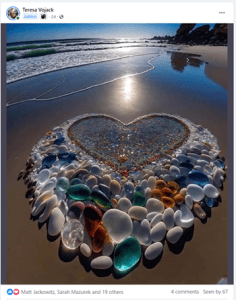
I was not surprised that male participation was lower than female. Of the men and women that I invited, about 50% of the women joined in comparison to just 25% of the men. Of the women that joined, about 30% to 50% regularly participated (depending upon the post) versus men which was only about 10% to 20% participation. I had to discount my husband because I felt his involvement, though sweet and supportive, was biased. I was pleasantly surprised that the one or two men that did participate, engaged with great questions, and requested more information on certain topics. See below images of Questions 1 and 2 about beach erosion. There were five questions in total. You can see how people voted, how many people voted, etc. I followed it up with the answers and additional information so that it flowed together. I always started each topic with a poll first in order to engage them in participation. This seemed to get their attention, test their own knowledge, and pique their interest! This definitely worked and led to additional discussion.
The First Poll – Questions #1:
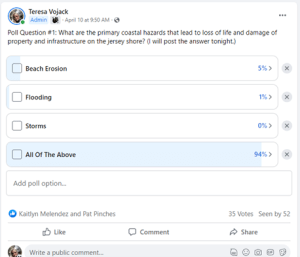
The Second Poll – Question #2
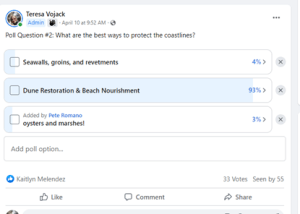
Answers to the Polls:
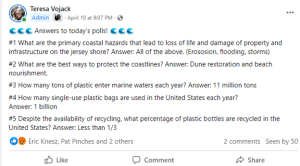
After I posted the poll answers, I posted visuals to tie things together such as this one below, which shows post storm erosion:
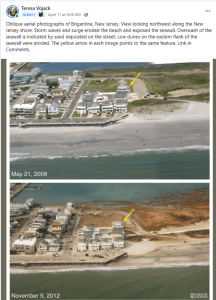
One of the more eye-opening posts was one in which I posted a 16 second video (with audio) I had taken last year while in Cape Cod of a Whale (Mother) and her calf swimming. I asked people to comment about what feelings this evoked in them. Many people shared that it brought them back to childhood memories, in particular a connection to family. Important to note that with the exception of my husband, it was all women that participated in this one. This reaffirmed the idea of women being more connected to nature through shared oppression. Women were more invested in this video using words such as, “powerful, peaceful, amazing, and home” to describe it. It reminds me of the indigenous women when they speak of the earth and its beings. This similar recognition of the mutual respect hidden amidst the stories that are carried down and shared happened on a small scale in the comments of this post. This sharing of stories happened in a few of the other posts as well. See the post and comments below.
Feel free to click on the video of the whales to get the full experience. Make sure your volume is up!

I incorporated suggestions made by classmates to make sure my posts were somewhat concise and did not contain too much burdensome information, creating some with meaningful quotes or pictures as well. It was suggested I use bullet-point style posts. I was able to post shorter amounts of information that was easy to understand and visually appealing. After the initial post, I posted a link to the complete article or source where I got the information for those interested in reading more. Here are examples of some short and simple posts that related to polls I posted. I followed this one up with a related article, and a short video of beach erosion that you can feel free to click on.
Concise Facts Post:
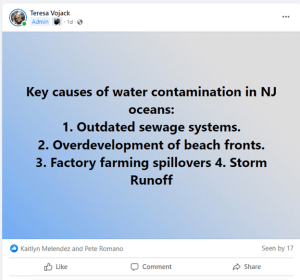
Followed up with an article:
Video of Beach Erosion:
Another quick post that was simple and spurred a good amount of conversation involved The Clean Water Act of 1972. I followed this one up with a map of the US which showed the number of days beaches were closed around the country in 2019 due to poor water quality conditions.
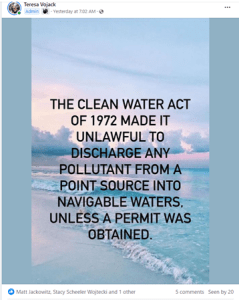
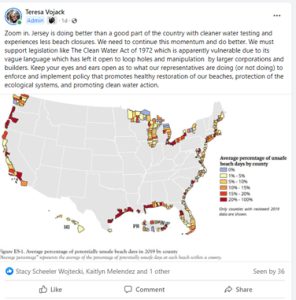
It was important to me that I maintain constant and consistent engagement and interest easily, while also providing more in-depth information for those that wanted it. I will say I was very happy with the number of people that got involved in such a short period of time. I have 90 members already! I was also pleasantly surprised by the number of people that said that they would participate in some type of action. See the polls below. This made my heart VERY happy! There were 83 votes calculated in the first poll! I may consider getting a group of people together at the end of the summer season to help with a beach clean-up!
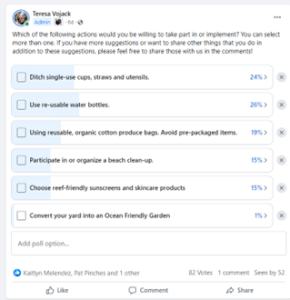
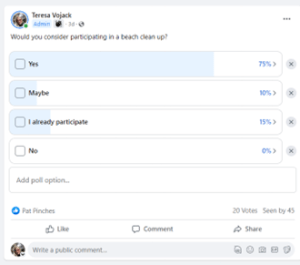
Overall – I felt great about this project. It was a manageable way to reach many people and start important conversations about beach erosion, sea level rise, ocean ecology, and so much more. In just a week I posted so many things I didn’t even include here such as resources for volunteering, polls and more in-depth information on plastics, short explanations about things like ocean acidification, and other resources such as the website for activist group “SurfRider” and Rutgers University Marine Station. Social media is an excellent vehicle for bringing people together quickly and spreading information concisely. It also allows the viewer/participant to regulate how involved they get which enables them the ability to be involved without being inundated or feeling overwhelmed. I really enjoyed this and am considering continuing with my group after class has concluded.
Please come visit my Facebook group “We Sea Change”.

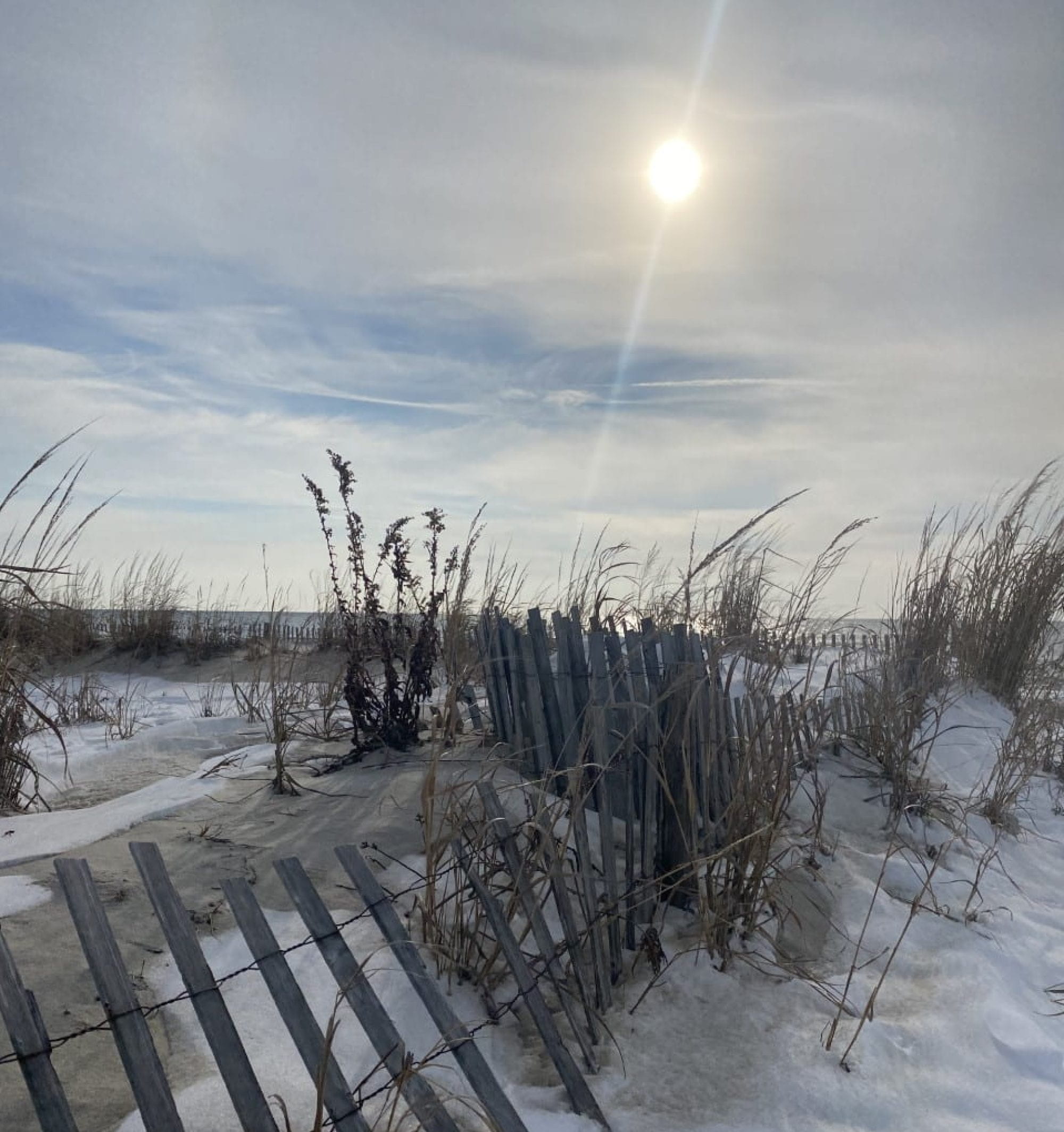
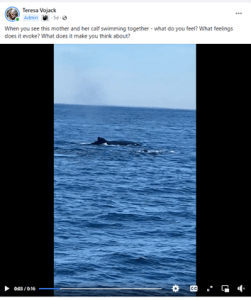
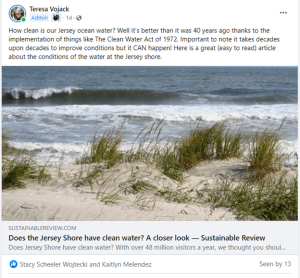
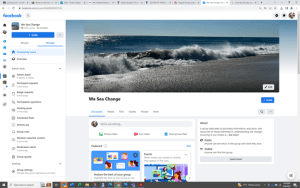
Hi Teresa,
I enjoyed reading your update blog for this praxis project! I think it is wonderful that you included several different modes of interaction whether it was polls, quotes, videos, or links to articles to keep the page both engaging and informative for everyone. It is interesting that you note the higher rate of women participation, this brings me to think of our unit on the women-nature association as we discussed how the ecological degradation of the land is connected to the oppression of women. As your page works to create activism in relation to sea restoration, the link between women representation and environmentalism support is highlighted. Like the women of the Chipko movement and the Green Belt Movement to name a few, the engagement in your page demonstrates that women are in support of environmental movements and harm to the natural world is a gendered problem due to our social structure. Additionally, I love that you followed your poll answers with visuals of ecological degradation that have progressed over the years. It is one thing to tell others about what is happening and pair this with statistics, but you take it a step further in justifying the message you are sending, especially when reaching audiences that may not have encountered this information previously. One of my favorite components that you integrated was the video and audio clip of the whale and her calf swimming off the coast of Cape Cod. Asking your participants to reply to this with the feelings and thoughts that came to their mind is a great way to break free from the human superiority perspective that often takes nature for granted. Rachel Carson’s piece came to mind as she calls for us to shed our human perceptions and see the bounties of life that the ocean holds. As I read the comments it was great to read that the feelings of connection, home, peace, family, and beauty were all mentioned. It allowed your viewers to recognize their connection to the natural world and even showed moments of understanding their place.
I was glad to see that many people participated in the poll that asked them to reflect on actions that they could take in making a change towards environmentalism. Each of the selections were something that they could do in their lives that they may not have thought about prior to your suggestions. It allows you to use your own form of activism to empower others so that they too can make a difference. Overall, this project seems to have created a sense of community where ideas and knowledge can be shared collaboratively to make a difference in the way we view and treat the natural world. I hope that you continue this page and share your philosophy!
Best,
Kylie Coutinho